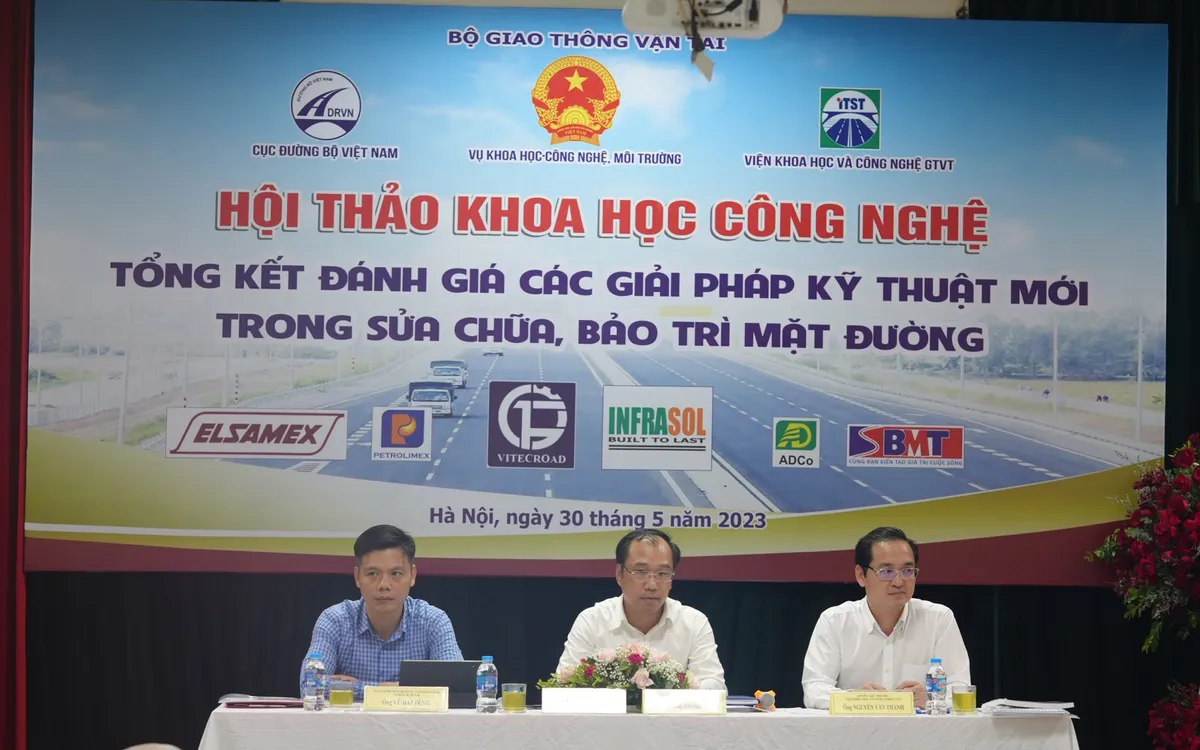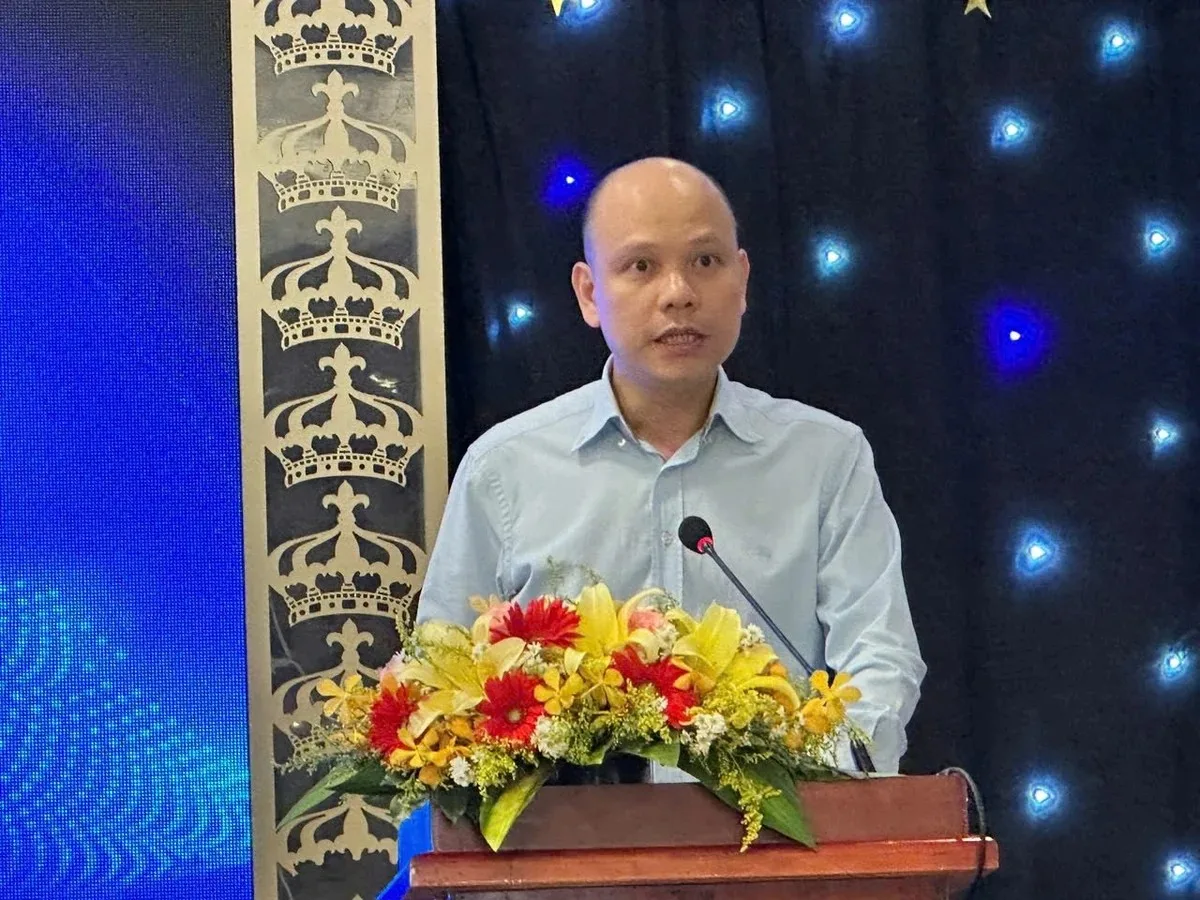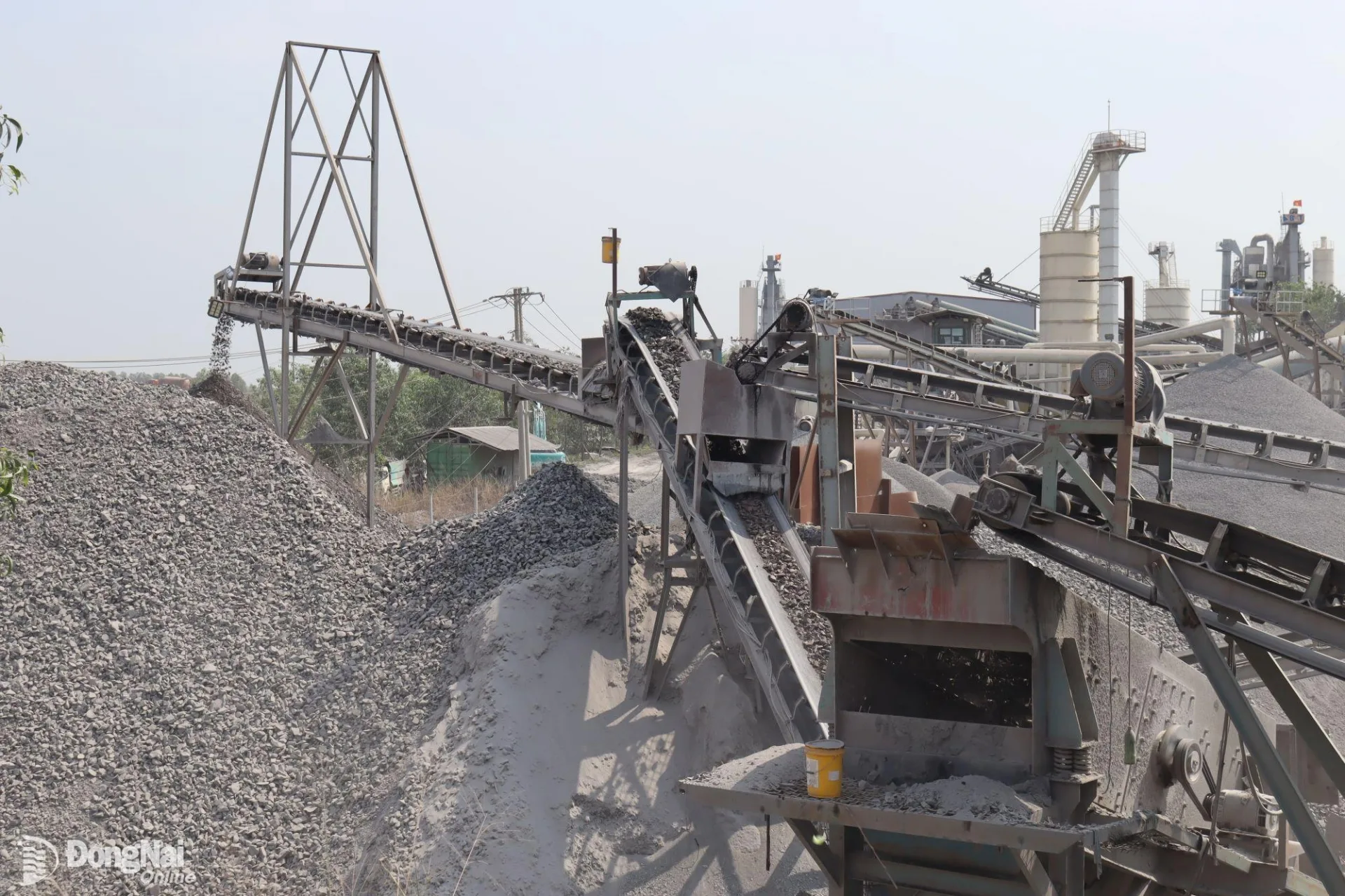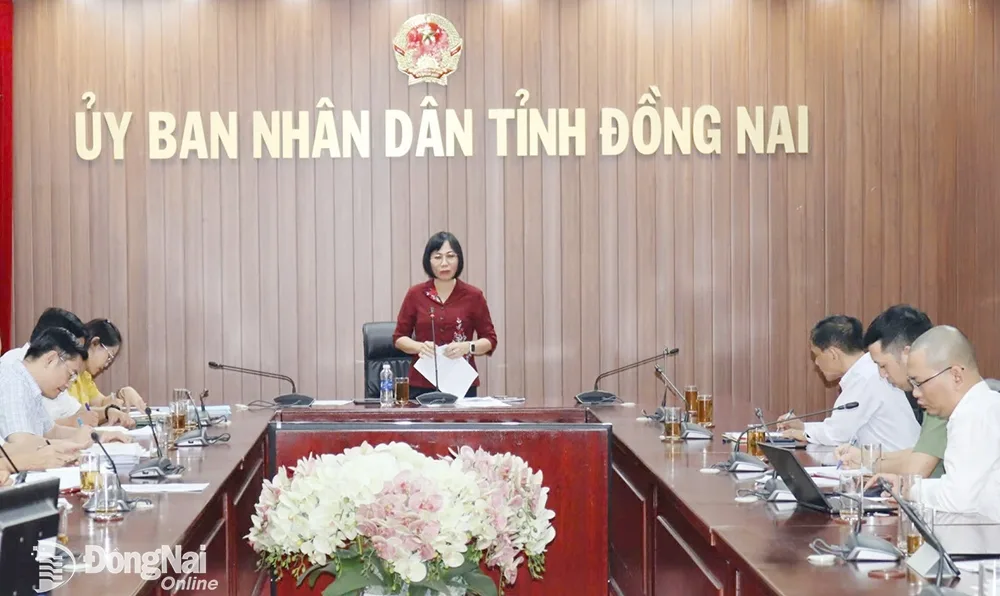In 2025, as major infrastructure projects in southern Vietnam simultaneously accelerate, the increased demand for construction stone has exposed various legal and procedural difficulties in quarry operations in Đồng Nai.
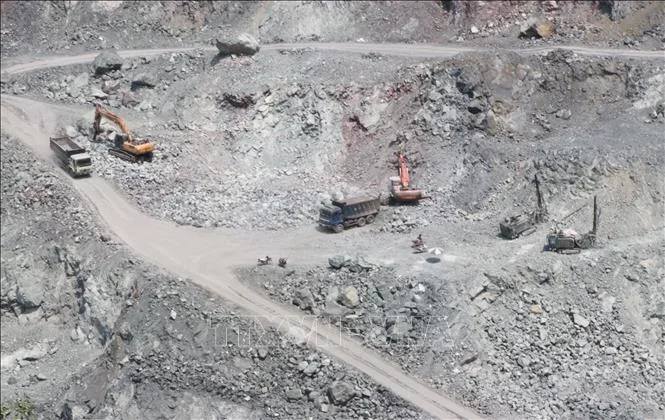
Stone mining activity at the Tân Cang quarry cluster.
Central and local authorities have held numerous meetings to resolve legal bottlenecks and increase mining capacity, but many issues remain unresolved.
Đồng Nai is considered Vietnam’s “stone capital” with 32 licensed quarries, a remaining reserve of approximately 265 million cubic meters, and a designed annual extraction capacity of 22 million cubic meters. While the southern region is seeing the implementation of many major projects and a massive demand for construction stone, a supply-demand imbalance is becoming evident.
Tân Cang 7 and Tân Cang 9 quarries in Biên Hòa City, Đồng Nai Province cover over 75 hectares, with most of the land acquired by businesses from local residents. Although the land has been fully compensated and handed over by the residents, nearly 30 hectares remain unqualified for mining due to land-use certification issues. Some land-use rights certificates have expired, and certain plots purchased by the enterprise lack proper certification. Additionally, at Tân Cang 9, the company acquired the mine from another investor, but the previous investor’s operations have not been formally terminated, and the new investor has not yet received an official investment policy approval.
Mr. Lê Đức Phát, Director of Tân Cang 7 and Tân Cang 9 quarries, stated that although these mines still have abundant stone reserves and are fully equipped in terms of machinery and manpower, due to legal obstacles, they are only operating at about 30% of their designed capacity. As a result, the stone supply does not meet project demands.

Stone processing machinery at Tân Cang quarry cluster, Biên Hòa City (Đồng Nai).
According to Mr. Phạm Thái Hợp, Deputy Director of Biên Hòa Construction and Building Materials JSC (investor of Tân Cang 1 quarry), Tân Cang 1 spans over 100 hectares, but over 20 hectares are still pending land lease due to delays in local land-use planning approval and complications in transferring land from residents. Consequently, the quarry has not been able to increase its capacity by 50% under the special mechanism to supply materials for the Biên Hòa – Vũng Tàu expressway. Moreover, Tân Cang 1 has not been licensed to exploit topsoil and weathered soil for landfilling needs.
In recent meetings between quarry operators and regulatory agencies, mining enterprises have emphasized that key southern projects are being expedited, but delays in stone supply threaten overall timelines. Companies propose allowing land-use transfers without verifying land origin again and quickly processing expired land-use certificates. They also request to be permitted to continue mining under current licenses while completing legal procedures in parallel.
According to a representative from the Airports Corporation of Vietnam, current stone supply only meets about 50% of the demand for Long Thành International Airport. In February 2025, contractors required over 540,000 m³ of stone but only received around 280,000 m³. In March, nearly 770,000 m³ was needed, but only 350,000 m³ was delivered. From now until June 2025, the airport will require nearly 2 million m³ of stone. Timely delivery each month is crucial for meeting the government’s deadline to complete the project by the end of 2025.
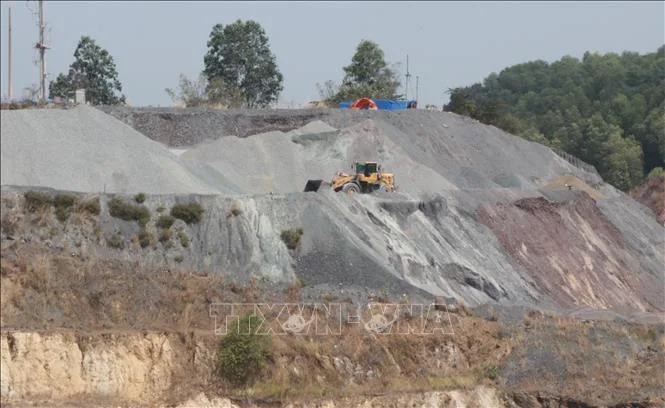
Stone extraction machinery at Tân Cang quarry cluster. Photo: Công Phong – VNA
According to the Đồng Nai Department of Agriculture and Environment, as of early 2025, 26 quarries in the province face legal issues, and 5 quarries have expired mining licenses. The main issue lies in land-use procedures. Many mining companies have only leased part of the total area, while the remaining parts—though compensated and acquired from residents—still lack legal clearance for mining leases. This has significantly reduced the actual production capacity of the quarries.
Critically, due to legal challenges, from now until the end of 2025, the Tân Cang quarry cluster—the largest in Đồng Nai and main supplier for Long Thành Airport and the Biên Hòa – Vũng Tàu expressway—can only mine about 2 million m³ of stone, whereas over 6.4 million m³ is required. If legal hurdles are removed, Đồng Nai’s quarries could produce nearly 10 million m³, fully meeting the needs of southern key projects.
Moreover, according to Đồng Nai People’s Committee, the province has repeatedly coordinated with central authorities and mine operators, establishing two task forces to resolve issues related to construction materials. The problem of soil for landfilling the Biên Hòa – Vũng Tàu expressway and Ring Road 3 (Ho Chi Minh City) has already been addressed.
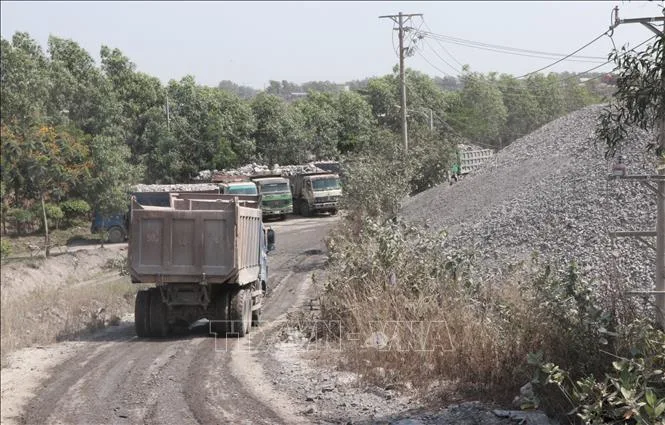
Stone transport vehicles at Tân Cang quarry cluster. Photo: Công Phong – VNA
Regarding construction stone, on April 10, Đồng Nai submitted a report to the Ministry of Agriculture and Environment outlining difficulties in supplying materials for major southern projects. The province requested specific guidelines for various land-use cases: plots transferred without land-use certificates, partial plot transfers, and land boundary adjustments between quarries.
Earlier in March, Đồng Nai also petitioned the Prime Minister to include Long Thành Airport in the list of projects eligible for special mechanisms, forming a legal basis for the province to raise mining capacity by 50%.


